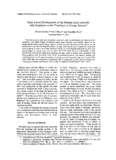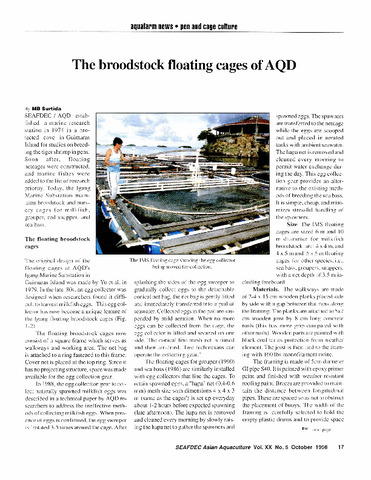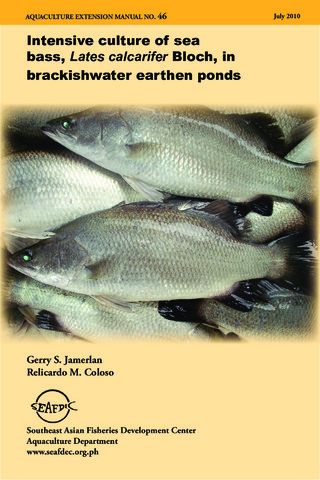Early larval development of the seabass Lates calcarifer with emphasis on the transition of energy sources
- Global styles
- MLA
- Vancouver
- Elsevier - Harvard
- APA
- Help

View/
Date
1986Page views
2,412ASFA keyword
AGROVOC keyword
Taxonomic term
Metadata
Perlihat publikasi penuh
Share
Abstract
The early growth, yolk and oil globule resorption, early morphological and behavioral de-velopment, and initial feeding of hatchery-raised Lates calcarifer were studied. Based on the developmental events and the energy the reby utilized, the early life history of this species can be broken down into the following five phases: 1) rapid early growth due to rapid yolk resorption (from hatching to about 15 hr after hatching (TAH); 2) morphological differentiation and slowgrowth based on energy from yolk (to about 50 h TAH when the yolk is exhausted); 3) slow growth with initiation of feeding and swimming activities, based on energy from oil globule and from exogenous food (to about 110 h TAH); 4) accelerated growth and effective feeding and swimming based on the same two sources of energy as in the preceding stage (up to about 120-140 h TAH when the oil globule is exhausted); and 5) accelerated growth, effective feeding and swimming and further development based solely on exogenous energy (beyond 140 h TAIT).
Suggested Citation
Kohno, H., Hara, S., & Taki, Y. (1986). Early larval development of the seabass Lates calcarifer with emphasis on the transition of energy sources. Nippon Suisan Gakkaishi , 52(10), 1719-1725. http://hdl.handle.net/10862/1064
Type
ArticleISSN
0021-5392Koleksi
- Journal Articles [1229]
Related items
Showing items related by title, author, creator and subject.
-
The broodstock floating cages of AQD
Surtida, Marilyn B. (Aquaculture Department, Southeast Asian Fisheries Development Center, 1998) -
Sea bass, groupers and snappers
Duray, Marietta N. (Aquaculture Department, Southeast Asian Fisheries Development Center, 1994)Studies on sea bass (Lates calcarifer) broodstock were directed at techniques to maximize egg production. Now known are the: optimum luteinizing hormone releasing hormone analogue (LHRHa) dose range to induce spawning, ... -
Series: Aquaculture extension manual; No. 46
Intensive culture of sea bass, Lates calcarifer Bloch, in brackishwater earthen ponds
Jamerlan, Gerry S.; Coloso, Relicardo M. (Aquaculture Department, Southeast Asian Fisheries Development Center, 2010)An extension manual describing criteria for site selection, monoculture and polyculture operations including feeds and feeding, harvest, common diseases, economic analysis.





